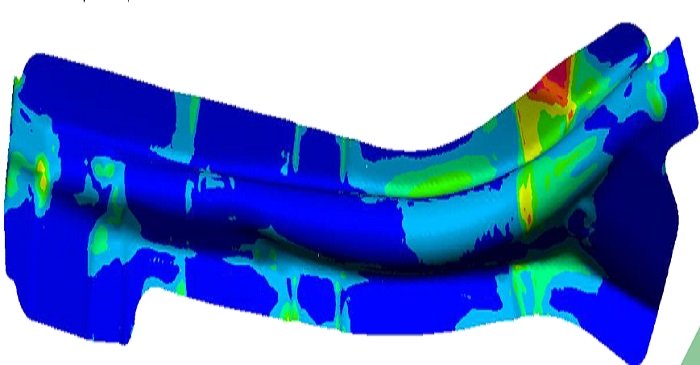PAB Coventry
Key luxury car components can be reduced in weight by 24% through new hydroforming technology
Background
As the world pushes towards net zero emissions targets, there is a demand across the automotive sector to reduce vehicle weight, and therefore CO2 impact. This drive spans the entire industry, from mass-produced models to heritage cars in the niche vehicle sector.
PAB Coventry specialises in heritage automotive, supplying industry leaders with components, panels, grilles, trim, instrumentation, brackets, and associated parts. Part-funded by the Niche Vehicle Network (NVN), an independent network of niche vehicle manufacturers, PAB collaborated with NMIS to identify a new way to manufacture lighter weight, large, complex vehicle components.
Challenge
Tailored blanks (TBs) are semi-finished parts typically made from sheets with different alloys, thicknesses, coatings, or material properties. Lightweight and low cost whilst being resilient in crash tests, TBs were identified by PAB as key to reducing vehicle weight. However, many car components are complex, requiring TBs to be manufactured separately and subsequently joined, resulting in part deformation and wrinkling of the material.
The project looked to develop a hybrid hydroforming technology, combining hydroforming and tailored blanks. Hydroforming is a cost-effective way of shaping metals into lightweight, structurally stiff, and strong pieces.
How did the AFRC help?
The AFRC conducted a Finite Element Simulation, which shows how a component or material reacts to specific influences. The simulation is based on unique algorithms that determine approximate values using a complex combination of differential equations.
The Forming team determined how the proposed hydroforming solution would respond under different conditions and identified how to improve crashworthiness, strength, rigidity, whilst also reducing weight and cost.
Business Impact
The research has provided a high degree of confidence to PAB that the proposed technology is technically and commercially feasible. The results predicted a component weight saving of 24% and a reduction in material thickness of 18% within existing material and design parameters.
This project also addressed the challenges of forming TBs with different properties, promoting weight savings through parts consolidation and reduced material usage. The project’s results also open the door for further manufacturing of complex-shaped components with greater material/design flexibility, presenting opportunities in other industries such as defense, aerospace, and rail.

Adam Malone, PAB Coventry said:
It was great to collaborate with the AFRC on this hugely valuable study. A dozen additional structural and panel components were identified that could utilise the technology, thereby leading to further opportunities for weight reduction.
In addition, the weight savings are expected to be optimised with further research and collaboration with design teams in the future.
